Poetry Cover Arts: Volume 206
[Note: This is the second installment of a semiannual series in which we highlight Poetry’s recent cover artists. These posts are a collaborative effort with Art Director Fred Sasaki and the artists themselves. For other recent posts on Poetry’s covers, see here and here.]

May 2015: Jenny Kendler, "Species Traitor I," 2013
Jenny Kendler’s practice “seeks to complicate the space between 'nature' and 'culture,' in order to re-enchant human beings' relationship with the natural world. She asks us to reexamine the idea of nature as something outside ourselves, making space to welcome the radical, transformative otherness of life on our bio-diverse Earth.” We asked her specifically about her work on the May cover and she wrote:
The title of this sculptural work, Species Traitor, references a term used in the radical green activist/anarcho-primitivist movement. It refers to a human being who chooses to ally themselves against the human species, in solidarity with non-human animals. The concept was a starting point for me to think about hybrid forms and how we can see ourselves as both human and non-human simultaneously—in other words, visualizing the animalness or “otherness” inside ourselves. After all, nine out of ten cells in our body are non-human, bacterial cells. Just as our own bodies need, even at their most rudimentary levels, the participation of others to make cellular energy or digest food—our living, breathing planet can be seen as a single communal organism, which in its diverse parts participates in a single “life.” This is then how I conceptualize myself as a species traitor: not explicitly against humanity, but against the view that humans are somehow not-animal, or fundamentally apart from the rest of the living, animate world. The form I created with this piece—marrying human and other in one simple gesture—suggests the possibility of a strange and beautiful harmony when we open ourselves in a deep way to this “otherness.”
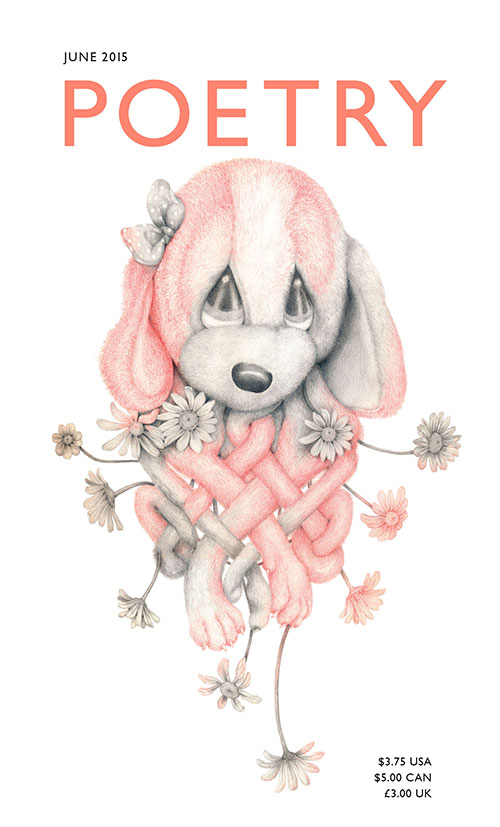
June 2015: Aurel Schmidt, "Celtic Puppy (pink)," 2014
Aurel Schmidt has a longstanding connection to poetry, including her March 2008 cover as well as her first major monograph, Reveries of a Lost Life Mask, with poems by the late Franz Wright. Here she is writing about her recent work featured in June:
The sad puppy drawing is from a small series of drawings I did called Misery. The imagery is a mix of generic images I got by Google image searching emotions I was feeling. I was gleeful being presented with a host of colorful clip art characters—a bright page of tiny, digitally watermarked pixies to guide me through my emotional states (also available for purchase in high resolution)—kitsch characters, Celtic knots, bacteria, viruses, the finger of judgement (my finger), real Advil migraine gel caps and real tears. The drawings are not supposed to be just cynical or funny, though. They are meant to be actually sad as well (I was sad when I drew them). They are meant to touch on feelings of despair, anxiety, sorrow, etc. while at the same time making fun of our expressions and language for sorrow, for meaning, for “depth.” They try to expose our limits and our folly. Laughing while crying while also thinking about what to have for lunch…
When I was making them I was thinking about the way we have adjusted ourselves to use the capitalist framework to also understand and communicate our most personal and acute emotions. We not only relate to its objects and images but also use its offerings as our religious symbols or tokens in times of need or desperation or strife. For instance the “sad puppy” has been a popular image/object living in slightly different forms via different companies since at least the fifties. An object that we can buy to sooth ourselves by holding, looking at, giving to a loved one to try to express our deepest and most confusing feelings—which is of course perverse since we are just grasping, and naming, a mass-produced mound of fluffed up petrol product some child made in Bangladesh. BUT at the same time, let’s admit, we actually still like, maybe even love, the puppy. It was a trick but we like the trick and we are still attached to the sad puppy image. I like it and when I’m sad images like that do make things less abstract, less chaotic, more neutral, more fluffy. It’s capitalism as successful religion, appreciated and thoroughly snuggled false idols. In the future I’m sure a similar perversity will be notable with the popularity of cute animal photos online, but until then let’s enjoy :)
Celtic knots, similar but more ridiculous—the hijacking from deep cultural symbol to tramp stamp. Together as one, sad puppy and tribal knot, the puppy is emotionally tied in knots, all over someone’s lower back.
Here are additional images from Misery, courtesy of the artist:
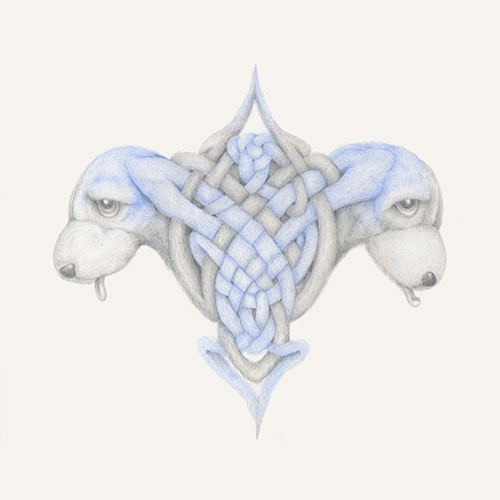
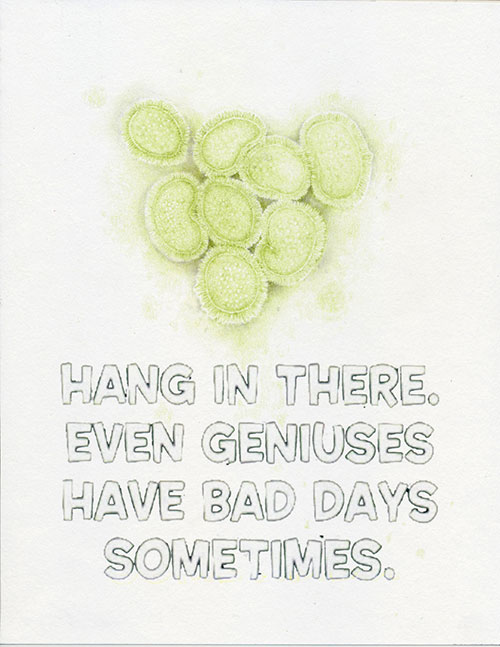
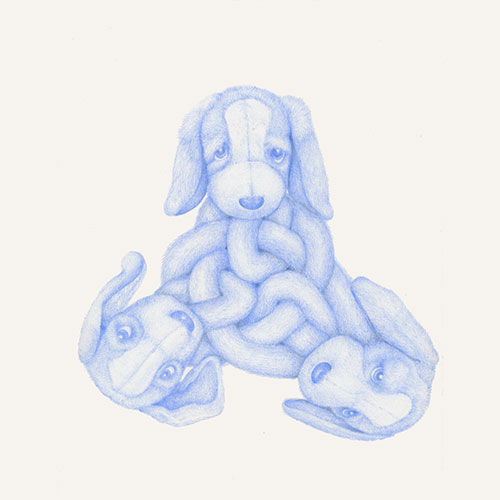
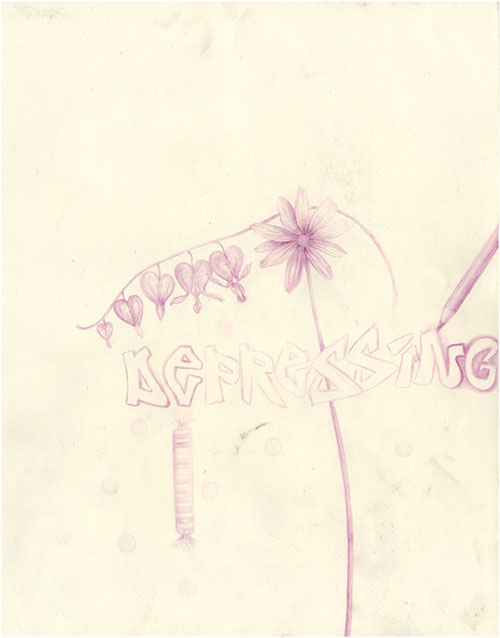
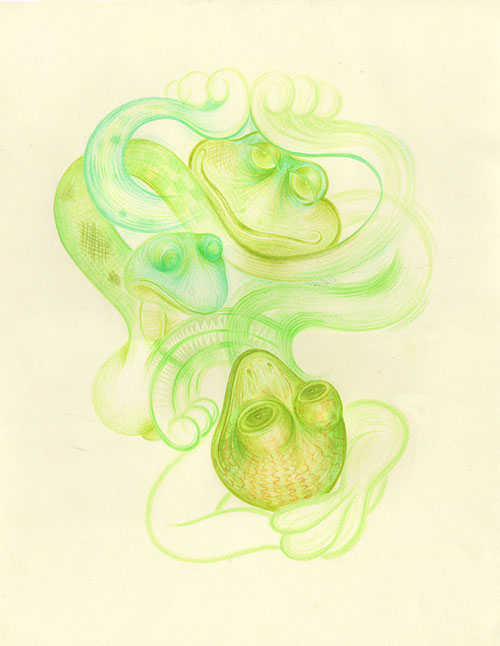
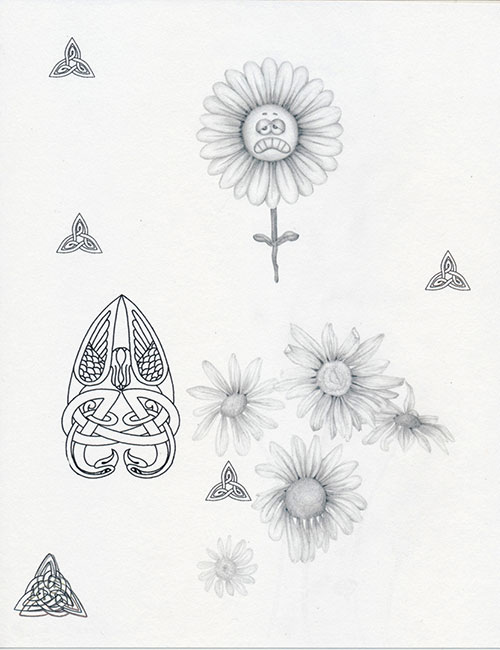
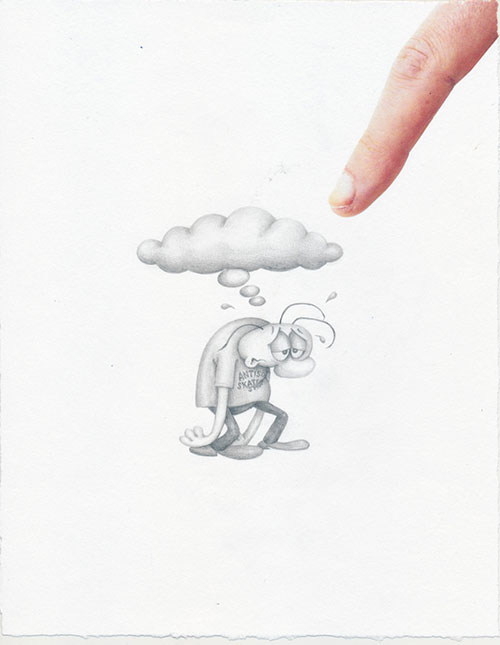
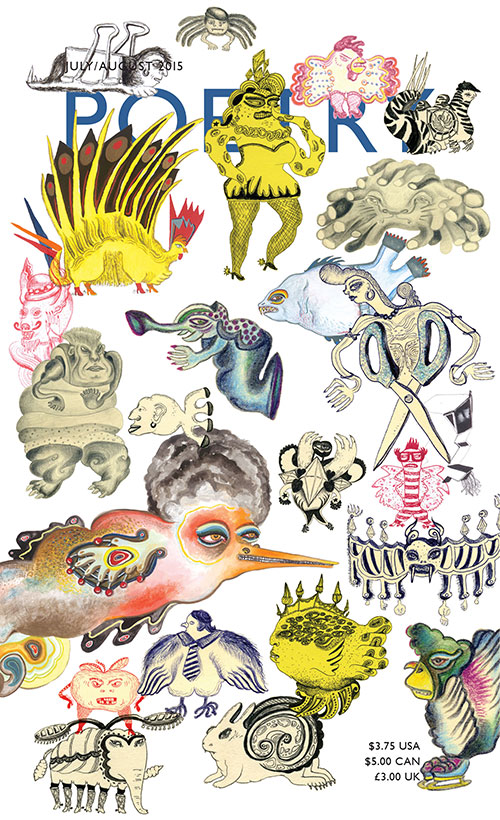
July/August 2015: Julie Murphy, "Undiscovered Creature Choreography #11," 2015
Julie Murphy’s “undiscovered species” speak for themselves (and dance!). But here is what their creator has to say:
Since my youth, I have been interested in biology, zoology, nature, and nomenclature. As a kid, I would invent animals out of household objects, then pretend to be a scientist in fake science documentaries, explaining their habitats and anatomy.
About 10 years ago, I started drawing pages of undiscovered creatures because it was relaxing and meditative. I approached it in an improvisatory way— start a creature, and keep working on it until it is done. Give it a name. I filled up file folders with these drawings. Nature always struck me as the ultimate manifestation of creativity. Biological diversity is mind-blowing in scope. Artistically, experimenting with forms, marks, lines, and shapes to create unique creatures presents a challenging exercise.
I’ve had dueling interests in film and illustration for years now. A frustrated casting director, I admit that many of my invented creatures exhibit anthropomorphic qualities. Many of them reflect people I see on the street, on public transit, at work, social events, even family members. They wear clothes and jewelry. Probably a fair share of them are self portraits. They originate as observations, rattle around the brain labyrinth, spring from the subconscious, slide down the arm, invade the pen and take form on paper. I enjoy the process. Recently, I decided to allow some of the characters to make cameo appearances in other pieces of artwork.
For Poetry magazine, I digitally compiled an assortment of some of my favorite characters from different undiscovered creature compositions.
Here are a few more creatures, with photos of Murphy’s studio:
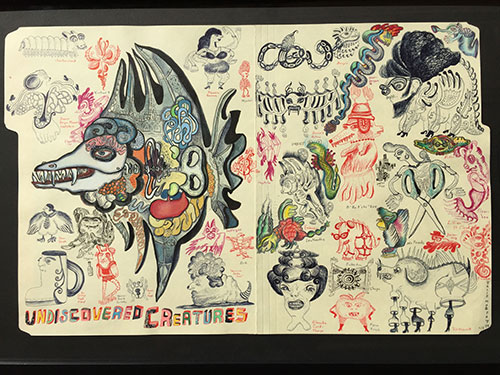
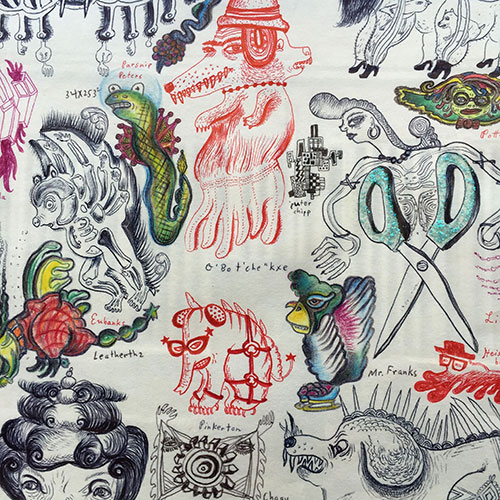
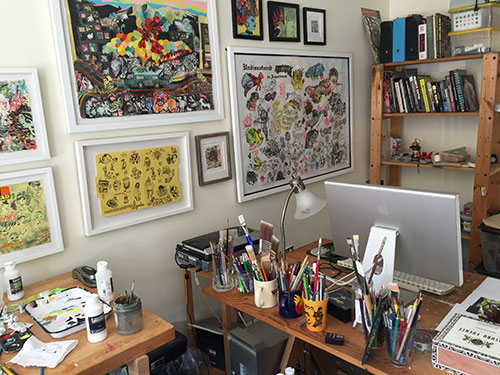
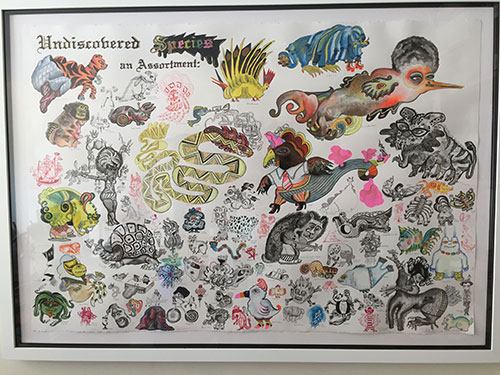
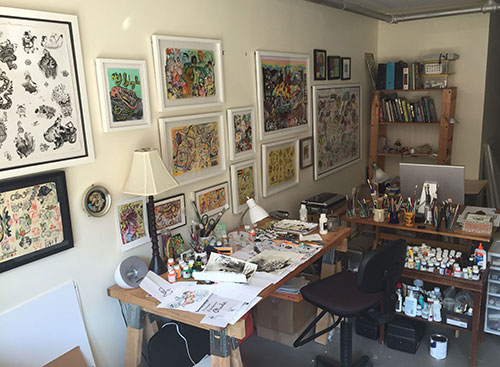
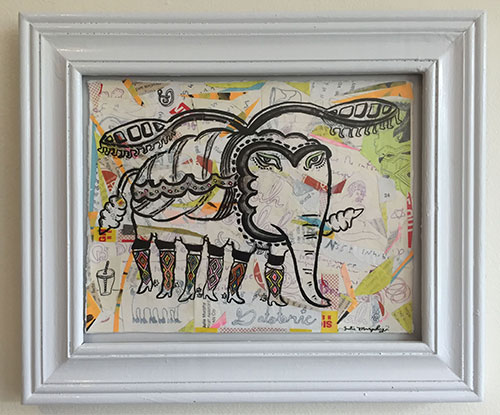
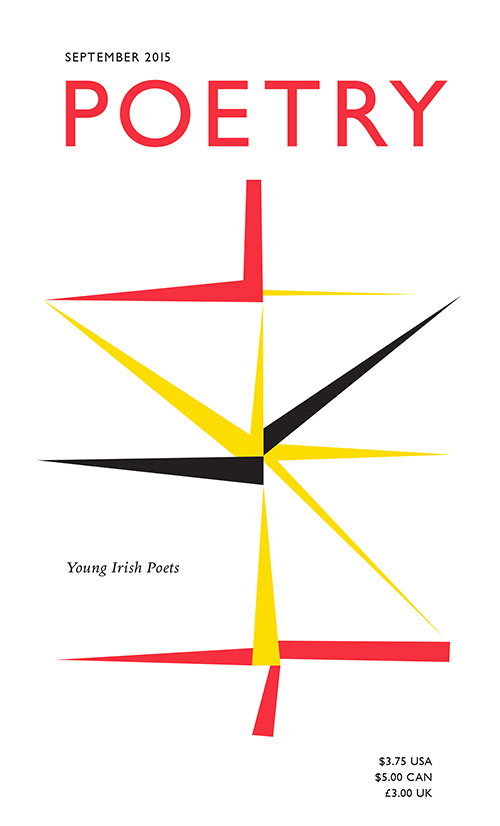
September 2015: Clare Rojas, "Star Pattern," 2012
Anglim Gilbert Gallery describes Clare Rojas’s recent painting as “abstract forms at play in space.” They explain:
Her new forms and distilled color palette of strong slightly-off-primary hues with black are at rest against a soft pale ground, contained but energized. Rojas has moved further toward precision and reduction, and her refined shapes appear linked, practically animated with their own properties—of character or personality?
The artist’s interest in history and storytelling invites the viewer to read the compositions as a narrative stripped down to its symbols, in an abstracted pictorial shorthand. Taking a different path toward the destination of formal abstraction, Rojas’s practice engages the optic energies of blocked color that almost meet, frame other shapes, group together, or pull away into the painted illusory space.
Apropos of that, Craig Hansen of Studio Principle animated Rojas’s work for our forthcoming POETRY Fall PARTY! (Right click the image below to open it in a new tab and view the animation.)
P.S. Here is Rojas as the enigmatic Peggy Honeywell.
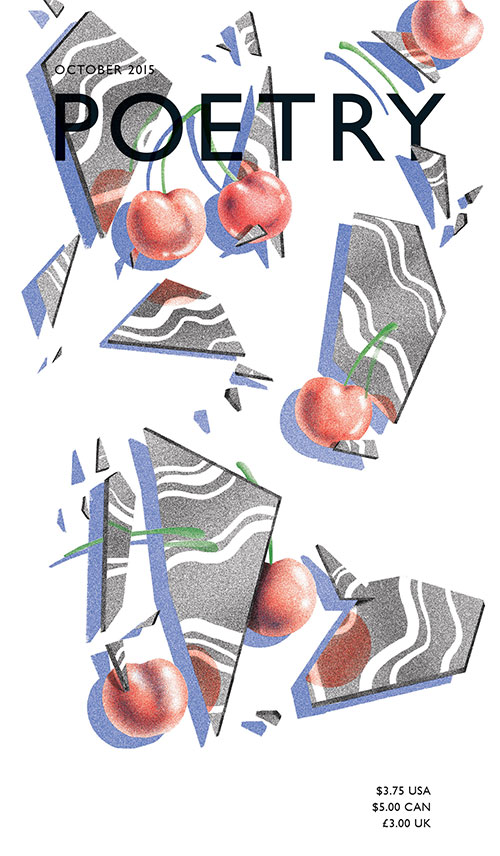
October 2015: Clay Hickson, "Shattered Cherries," 2013
Clay Hickson is the owner and operator of Tan & Loose Press, as well as a freelance illustrator. Here’s what’s behind his “Shattered Cherries”:
At the time, I was looking at a lot of airbrush illustration from the seventies and eighties. I really like all the images of everyday household objects that somehow get turned into sexual objects. Like a super zoomed in painting of a plug going into an electric socket where every single detail is amplified and then (often) rendered as chrome. There always seems to be a sense of humor in it and I like the idea of someone spending hours or days slaving over this painting that is essentially a crude joke. It may not be the most poetic depiction of sexuality, but you can't deny its beauty.
Anyway, I had that stuff in mind when I was making this image. I'm not sure exactly what I was saying with it, but there's something inherently sexual about cherries and the idea of them plummeting through a cloud of shattered mirrors seemed to be ripe with all kinds of symbolism.
If you’re in Chicago on Wednesday, November 4, please join us for more art and poetry at the aforementioned party.
THIS JUST IN—select guests will receive a pumpkin decorated by Clay Hickson himself!


